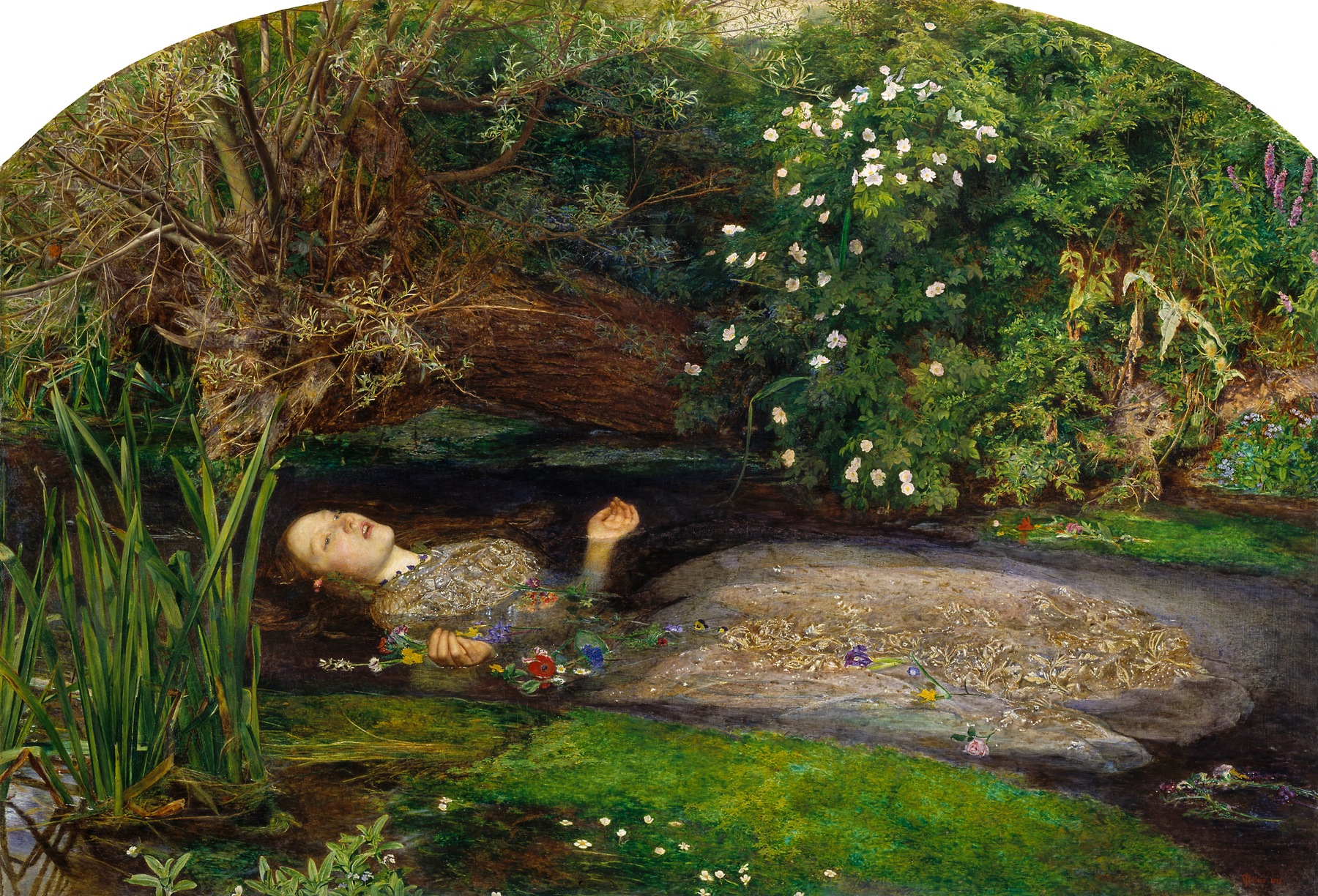
Art Appreciation
In this captivating work, the enchanting scene unfolds before us, as a young woman, lifeless and serene, floats delicately in a pool of water. With her floating form partially submerged, she appears ethereal, draped in a gown that embraces her figure while her languid pose suggests tranquility amidst a tragic tale. Surrounding her, a tapestry of rich greens and vibrant floral accents creates a juxtaposition of life against her stillness—those soft hues invite the viewer's gaze to linger; the glassy surface of the water reflects the lush vegetation, amplifying a sense of serenity and sorrow. One can almost hear the gentle whisper of the leaves rustling in the breeze, a loving farewell to the departed.
Every detail—the intricate representation of the flora, the myriad butterfly colors, and the exquisite textures of her clothing—speaks to Millais' dedication to realism and his Pre-Raphaelite ideals. The composition draws the eye in a fluid movement, guiding the viewer to the central figure while surrounding elements tell their silent story: the white flowers signify purity, the dark branches overhead suggest a looming sense of foreboding. Historically, this artwork comes from the mid-19th century, a period marked by a fascination with emotional depth and nature, but also a probing examination of mortality and loss. The painting is a testament not only to Millais' skill but also to the broader art historical context of combining beauty with tragic narratives, leaving an indelible impression—one feels both a profound appreciation and a heavy heart when absorbing this striking visualization of a timeless story.